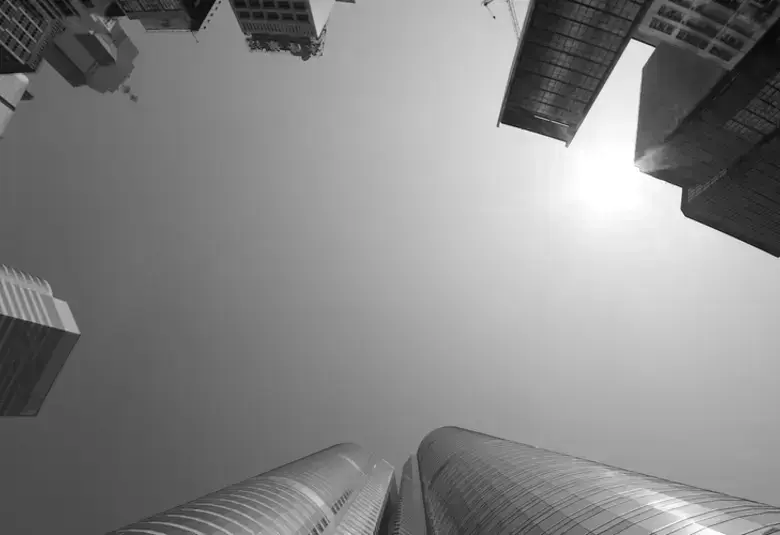New treatments and improved diagnostic and staging tools will allow for a complete solution for Alzheimer’s disease in the future, that was the key messages of a forward-thinking symposium at the 11th CTAD congress. New self-assessment tools may be provided to individuals concerned about their cognitive health, utilizing digital technology. Advances with blood biomarkers, ultrasensitive immunoassays, and new imaging techniques will provide early screening tools and may serve as biomarker outcomes for developing new therapies. Ultimately, management of this multi-factorial disease will require a combination of treatments with different mechanisms, that may be furnished from treatments currently in clinical development.
미래에는 새로운 치료법과 개선된 진단 및 병의 단계 분류 도구가 알츠하이머병의 완전한 해결을 가능하게 할 것입니다. 이는 이번 제11회 CTAD 회의에서 열린 진보적 심포지엄의 주요 메시지였습니다. 인지기능 건강이 염려되는 사람들은 디지털 기술을 이용하는 새로운 자가 평가 도구를 제공받을 수도 있습니다. 또한 혈액 바이오마커, 극도로 민감한 면역 분석법(ultrasensitive immunoassays), 새로운 이미징 기술의 발전은 조기 검사 수단과 그리고 새로운 치료법 개발을 위한 바이오마커 지표(biomarker outcomes)를 제공할 것입니다. 궁극적으로 알츠하이머병이라는 다원적 질환(multi-factorial disease)의 관리에는 현재 임상연구에서 개발되고 있는 치료제들로부터 제공될 수 있는 다양한 메커니즘 치료제들의 병용이 요구됩니다.
New treatments, improved methods for identifying individuals in the earliest stages of disease, and improved diagnostic and staging tools may allow development of a complete solution for patients with Alzheimer’s disease said Dr Rachelle Doody, Global Head of Neurodegeneration at Roche, Switzerland, introducing a symposium at the 11th CTAD congress. Progress towards a complete solution could start by providing self-assessment tools to individuals who are concerned about their cognitive health, developing more accurate clinical tools to stage disease, and providing a range of treatment options for patients at all stages of Alzheimer’s disease.
제11회 CTAD 회의에서 열린 심포지엄을 시작하면서 스위스 제약 기업 로슈(Roche)의 신경퇴행부문 글로벌 본부장 라셀 두디(Rachelle Doody)는 신규 치료제들, 알츠하이머병 초기 단계 환자를 식별해내는 더 나은 방법, 그리고 개선된 진단 및 병의 단계 분류 도구를 통해 알츠하이머병 환자를 위한 완전한 해결책을 개발할 수 있을 것이라고 말했습니다. 이 완전한 치료법을 향한 첫 발걸음은 인지 기능 건강을 우려하는 사람들에게 자가 평가 도구를 제공하고, 병의 단계 분류를 위한 보다 정확한 임상 도구를 개발하며, 모든 단계의 알츠하이머병 환자를 위해 다양한 치료 옵션을 제공하는 것으로 시작할 수 있습니다.
Self-detection of cognitive problems is indeed possible and has been demonstrated in multiple studies,1,2 said Dr Mary Sano, Alzheimer’s Disease Research Center, Icahn School of Medicine at Mt. Sinai, New York, USA. A recent meta-analysis suggests that the presence of subjective memory concerns doubles the likelihood that a person has or will develop dementia,3 she added.
미국 뉴욕 마운트시나이 아이칸 의대 알츠하이머병 연구센터의 메리 사노(Mary Sano) 박사에 따르면 실제로 인지 장애는 자가 발견이 가능하며, 이는 복수의 연구들을 통해 입증되어 왔습니다.1,2 사노 박사가 덧붙여 소개한 최근 메타 분석 연구에 따르면 기억력에 대한 주관적 우려가 있을 경우, 치매가 있거나 향후 발병할 가능성이 두 배 더 높습니다.3
Digital technologies, such as smartphones and wearables, offer the potential to do even better in capturing both subjective and objective measures of cognition. The use of smartphones among those aged over 50 is rising,4 and a proof-of-concept study (iVitality) has shown high compliance (60% over 6 months) with cognitive testing using a smartphone app among people at increased risk of dementia (family history, mean age 57 years).5
스마트폰, 웨어러블 기기와 같은 디지털 기술은 인지기능의 객관적 및 주관적 파악을 모두 개선할 수 있는 가능성을 제공합니다. 최근 50세 이상 중장년층에서는 스마트폰 이용률이 증가하고 있으며,4 iVitality 라는 한 개념 증명 연구(proof-of-concept study,)에서는 치매 위험이 높은 사람들(가족력, 평균 연령 57세)이 스마트폰 앱을 이용한 인지 검사에 높은 순응도(compliance)를 (6개월간 60%) 보인다는 것이 입증되었습니다.5
Smartphone apps could enable early identification of cognitive problems in people at risk of Alzheimer’s disease
스마트폰 앱을 통해 알츠하이머병 발병 위험이 있는 사람들의 인지 장애를 조기에 발견하는 것이 가능해질 수도 있습니다
Advances in identifying plasma amyloid-b (Ab) biomarkers offer huge advantages for screening and diagnosis in terms of reduced cost and much greater availability to large populations,6-8 said Dr Christopher van Dyck of the Alzheimer’s Disease Research Unit, Yale University, USA. The Trial-Ready Cohort for Preclinical/Prodromal Alzheimer’s Disease (TRC-PAD) project will incorporate three different plasma biomarker assay platforms, which will enable multi-center comparative field testing of the assessment tools.
미국 예일대학교 알츠하이머병 연구부의 크리스토퍼 반 다이크(Christopher van Dyck) 박사는 혈장 아밀로이드베타(amyloid-b (Ab)) 바이오마커 발견 방식의 발전은 비용을 절감시킬 뿐만 아니라 수많은 사람들에게 보다 많은 이용 기회를 제공한다는 측면에서 검사 및 진단 분야에 큰 이점들을 제공한다고6-8 설명했습니다. The Trial-Ready Cohort for Preclinical/Prodromal Alzheimer’s Disease (TRC-PAD) 프로젝트에서는 세 가지 유형의 혈장 바이오마커 분석 플랫폼을 통합하여 진단 평가 도구의 다기관 비교 현장 시험을 가능케 할 것입니다.
Advances with blood biomarkers, ultrasensitive immunoassays, and new imaging techniques will provide early screening tools and may serve as biomarker outcomes for developing new therapies
혈액 바이오마커, 극도로 민감한 면역 분석법, 새로운 이미징 기술을 바탕으로 한 발전은 조기 검사 도구와 새로운 치료법 개발을 위한 바이오마커 지표를 제공할 것입니다
Ultrasensitive immunoassays for Ab oligomers in cerebrospinal fluid (CSF) offer the ability to demonstrate target engagement in clinical trials and may serve as biomarker outcomes for developing therapies.9 In addition, a ligand (binding to synaptic vesicle glycoprotein 2) for synaptic position emission tomography (PET) imaging,10 developed by the Yale Center, could offer the first in vivo measure of synaptic density as an outcome measure in clinical trials of disease-modifying therapies, particularly those targeting synapses.
뇌척수액(CSF) 내 아밀로이드베타 올리고머를 대상으로 하는 극도로 민감한 면역 분석법은 임상 시험에서 표적 작용(target engagement)를 입증할 수 있게 해주며, 치료법 개발을 위한 바이오마커 지표를 제공합니다.9 또한, 예일 센터에서 개발한 시냅스 양전자 방출 단층촬영술(PET) 이미징을 위한 리간드(ligand, 시냅스 소포 당단백질에 결합되는 화합물)10는 최초로 생체내 시냅스 밀도 측정 척도를 질환개선 치료제, 특히 시냅스를 표적으로 하는 치료제들의 임상시험에 제공할 수 있습니다.
There is little doubt that this complex disease will be treated with combination therapies in future, said Professor Dennis Selkoe of the Brigham and Women’s Hospital and Harvard Medical School, Boston, USA. Like other chronic, multifactorial diseases, Alzheimer’s disease may be treated with a combination of two or more disease-modifying agents that target the same or different pathogenic factors, he said.
미국 보스턴 브리검 앤드 위민스 병원 및 하버드 의대의 데니스 셀코에(Dennis Selkoe) 교수는 미래에는 알츠하이머병이라는 복합적인 질환이 복합 치료법을 통해 치료될 것이라는 사실에 거의 의심할 여지가 없다고 말했습니다. 셀코에 교수에 따르면 다른 다원적 만성 질환들과 마찬가지로 알츠하이머병은 동일하거나 서로 다른 병원성 요인들(pathogenic factors)을 표적으로 하는 두 가지 이상의 질환 조절 치료제들을 결합하여 치료할 수 있을 것입니다.
Alzheimer’s is a complex disease that will be best treated with combination therapies
알츠하이머병은 복합적 질환으로서 복합 치료법이 최선의 치료 방식입니다
Professor Selkoe suggested a new approach to treating Alzheimer’s disease, beginning with risk assessment in mid-life to generate an Alzheimer’s disease risk score. This score would incorporate family history, results from a cognitive screen and neuropsychological testing, genetic testing, plasma biomarkers, imaging studies, and CSF testing. The treatment approach would be designed based on the Alzheimer’s disease risk category into which a person falls.
셀코에 교수는 알츠하이머병 위험도 점수를 측정하기 위한 중년층 대상 위험 평가로 시작하는 새로운 알츠하이머병 치료 접근법을 제안했습니다. 이 위험도 점수는 가족력, 인지 검사 및 신경 심리 검사 결과, 유전자 검사, 혈장 바이오마커, 이미징 연구, CSF 검사 등을 모두 조합하여 평가합니다. 이후 검사 대상자가 해당하는 알츠하이머병 위험 범주에 따라 치료법을 설계됩니다.
The best approach to treatment may be to start with one agent with proven benefits before adding a second agent. At least one of the agents should neutralize or clear diffusible Ab-oligomers said Professor Selkoe, since they increasingly appear to be pathogenic.11 The second drug could be an anti-tau agent or target Ab through a different mechanism.
최적의 치료법은 두번째 약물을 추가하기 전에 이미 효과가 입증된 약물로 먼저 시작하는 것입니다. 셀코에 교수의 설명에 따르면 확산성 아밀로이드베타 올리고머는 점점 더 병원성이 있는 것으로 보이므로, 적용하는 물질 중 최소 한 가지는 올리고머를 중화하거나 제거할 수 있어야 합니다.11 두 번째로 적용하는 약물은 항타우(anti-tau) 물질이거나 다른 메커니즘을 통해 아밀로이드베타를 표적으로 하는 물질이 될 수 있습니다.
본 자료는 Global Lundbeck 의학부에서 선별한 콘텐츠이며, 한국룬드벡의 의견과 다를 수 있습니다




